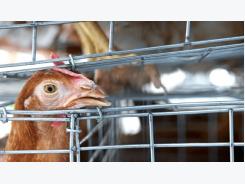Vietnams bananas in big paradox

While banana farmers in Dong Nai Province are awaiting help from consumers to rescue their oversupply, banana farmers in Long An Province are worrying that their output cannot meet the high demand of buyers. What creates the difference is the way they select their markets and farming methods.
Dong Nai is renowned for its high quality banana products, mainly serving the domestic market. In the last two years, banana farmers in Dong Nai have expanded their farming area to meet the rising demand of China’s market as banana output in the northern neighbor decreased under the impact of harsh weather conditions.
Besides, Vietnam has overtaken the Philippines to become a main banana supplier of China’s market since China temporarily stopped importing bananas from the Philippines, resulting in an upsurge in Vietnam’s banana price with its peak at VND15,000 per kilo in October 2016, doubling the average of previous years.
However, China has recovered its banana production and resumed import of bananas from the Philippines since the beginning of 2017, leading to a glut of Vietnam’s bananas. As a result, the banana price in Dong Nai has plunged and Vietnamese consumers have begun a rescue campaign by spending more money to buy bananas.
However, the situation in Long An Province is a totally different picture as farmers are busy preparing their products for export.
Instead of depending mostly on local and Chinese markets, they use clean cultivation techniques under the Vietnamese Good Agricultural Practices (VietGap) standards with the aim to tap into choosy markets like Japan and Korea.
Vo Quan Huy, a banana farmer in Long An, said his banana output is expected to reach 9,000 tons this year with 90% of it bound for Korea and Japan and the remaining 10% for China.
To export bananas to China, traders need to transfer their products to the port of entry for buyers to check the products with their own eyes and make decisions. The process from collecting bananas at the farm to handing over the products to Chinese buyers takes two to three days.
Meanwhile, buyers from Korea and Japan carry out numerous inspections before signing contracts. “During their visit to my banana farms, the Japanese partners collected the soil and water samples for testing. They will not cut a deal until the results satisfy their requirements,” Huy added.
Besides, it takes three to four weeks for bananas from Vietnam to reach Korean or Japanese consumers, requiring modern preservation methods.
Compared to products from Indonesia, the Philippines or South American countries, bananas of Vietnam are of higher quality and tastier but their prices are 10% lower, so the door is wider for them to enter choosy markets.
Related news
Tools

Phối trộn thức ăn chăn nuôi

Pha dung dịch thủy canh

Định mức cho tôm ăn

Phối trộn phân bón NPK

Xác định tỷ lệ tôm sống

Chuyển đổi đơn vị phân bón

Xác định công suất sục khí

Chuyển đổi đơn vị tôm

Tính diện tích nhà kính

Tính thể tích ao



 Export ratio of farm produce in decline
Export ratio of farm produce in decline  Agricultural engineering awaits big investment wave
Agricultural engineering awaits big investment wave